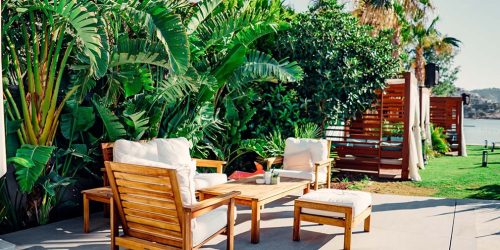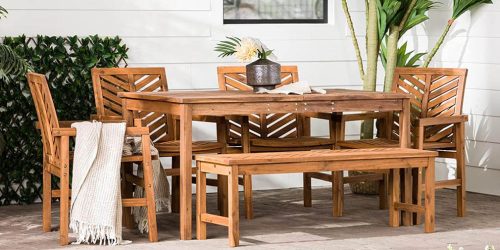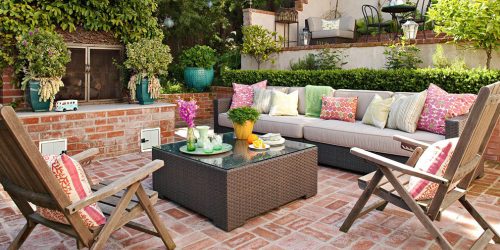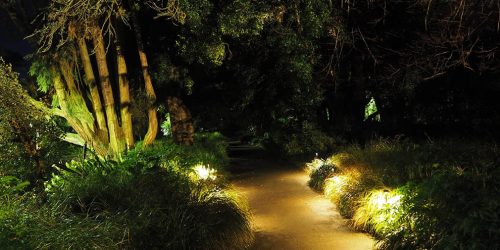Creating the Perfect Garden: How to Design an Outdoor Space That’s Both Beautiful and Functional
A well-designed outdoor space can transform your home into a tranquil retreat, a place to entertain, or a lively area for family gatherings. Whether you have a spacious backyard or a compact balcony, the key to creating the perfect garden is to strike the right balance between aesthetics and practicality. A garden should not only reflect your personal style but also meet your lifestyle needs, providing areas for relaxation, play, and entertaining, while also being easy to maintain.
1. Assess Your Space and Set Clear Goals
Before diving into the design process, take time to assess your outdoor space. Understanding the unique features and challenges of your garden is crucial for creating a design that works.
- Measure Your Space: Take precise measurements of your garden or outdoor area. This will help you plan the layout, select the right furniture, and ensure that your space doesn’t feel overcrowded.
- Consider Sunlight and Shade: Observe how much sunlight or shade different parts of your garden receive throughout the day. This will influence the types of plants you choose, as well as where to place seating areas or outdoor dining.
- Identify Your Needs: Think about how you intend to use your garden. Do you want a quiet retreat for relaxation? A space for outdoor dining and entertaining? Or perhaps a play area for children? Setting clear goals for your garden will guide your design decisions.

2. Create Functional Zones
One of the most effective ways to design an outdoor space that’s both beautiful and practical is to break it up into distinct zones, each serving a specific purpose. Zoning allows you to make the most of your garden, ensuring that each area is tailored to its function while maintaining a cohesive aesthetic.
- Seating Area: A seating area is essential for any garden, whether it’s a cozy corner for reading, a lounge area for relaxation, or a dining space for hosting guests. Choose comfortable, weather-resistant furniture, such as outdoor sofas, armchairs, and dining tables. If space is limited, consider compact bistro sets or foldable furniture that can be stored away when not in use.
- Dining Area: If you love outdoor meals, create a dedicated dining space. A wooden or metal dining table, paired with comfortable chairs, can help turn your garden into the perfect spot for al fresco dining. Consider adding a pergola or shade umbrella for sun protection.
- Relaxation Space: A garden is the perfect place to unwind and relax, so make sure to carve out a space for lounging. Hammocks, swing chairs, or a small outdoor daybed can add comfort and style to your outdoor space.
- Play Area: For families with children, a designated play area is a must. You can set up a sandbox, a small playhouse, or even a lawn area for games and activities. Ensure the area is safe and accessible, with soft surfaces like grass or rubber mulch.
- Vegetable Garden or Greenhouse: If you’re interested in growing your own food, consider setting up a vegetable garden or a greenhouse. Raised garden beds or vertical planters are great options for smaller spaces, allowing you to grow herbs, vegetables, and fruits right at home.
3. Incorporate Natural Elements
A garden is inherently tied to nature, so it’s important to incorporate natural elements that enhance both the beauty and functionality of your outdoor space. These elements can create a peaceful, harmonious environment and help to balance the design.
- Plants and Flowers: Selecting a mix of plants that suit your space is crucial. Choose a combination of shrubs, flowers, and trees to add color, texture, and structure. If you have a smaller garden, opt for compact or container plants that don’t take up too much space but still provide visual interest. Remember to choose plants that thrive in your climate, whether that means drought-tolerant varieties for dry climates or moisture-loving plants for wetter areas.
- Water Features: Adding a water feature, such as a fountain, pond, or even a small waterfall, can create a soothing atmosphere and act as a focal point in the garden. The sound of flowing water is calming and can help drown out noise from the surrounding environment.
- Natural Materials: Use natural materials like wood, stone, and gravel for paths, decking, and outdoor furniture. These materials blend beautifully with plants and give the garden a grounded, organic feel. A stone pathway leading to different zones or a wooden deck for lounging can help integrate the natural world into your garden’s design.
4. Choose Low-Maintenance Elements
Designing a beautiful garden is one thing, but making sure it’s easy to maintain is another. To ensure that your garden doesn’t become a chore, it’s essential to choose low-maintenance elements that fit with your lifestyle and time constraints.
- Hardscaping: Incorporate hardscaping features like paved walkways, decks, and retaining walls that require little upkeep compared to plants. Paving stones, tiles, or decking made from composite materials can withstand the elements and require only occasional cleaning.
- Drought-Resistant Plants: Opt for plants that require less water and attention. Drought-tolerant plants like lavender, succulents, and ornamental grasses are great options that add texture and color without demanding frequent watering.
- Synthetic Turf: If you’re not keen on maintaining a lawn, synthetic turf can be a great alternative. It looks like real grass but requires little to no maintenance—no mowing, watering, or fertilizing. It’s an excellent choice for smaller gardens or those in dry climates.
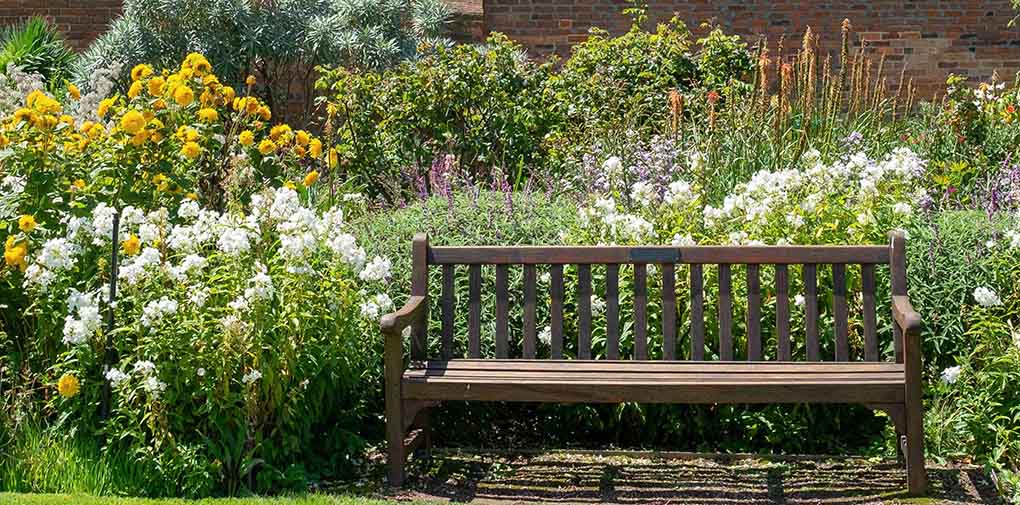
5. Lighting for Ambience and Safety
Lighting is a key element in creating a functional and attractive outdoor space. It not only helps to set the mood for evening gatherings but also enhances the safety and security of your garden.
- Ambient Lighting: Use string lights, lanterns, or LED garden lights to create a warm, welcoming atmosphere in the evening. Hang fairy lights on fences, wrap them around trees, or place them along garden paths to add a magical touch.
- Task Lighting: If you have a dining area or barbecue spot, task lighting is essential for safety and visibility. Place lights around your outdoor cooking and dining spaces to make them more functional at night.
- Accent Lighting: Highlight specific features of your garden, such as a beautiful tree, a water feature, or an architectural element, using accent lighting. Spotlights or uplights can add drama and interest to the space.
6. Sustainability and Eco-Friendly Practices
Today, many people are choosing to design gardens that not only look good but are also environmentally friendly. Sustainable garden practices can make your outdoor space more eco-conscious while also reducing your maintenance time.
- Rainwater Harvesting: Consider installing a rainwater harvesting system to collect water for irrigation. This reduces water usage and helps maintain a greener garden.
- Native Plants: Choose native plants that are adapted to your local climate and require fewer resources to thrive. Native plants are also beneficial to local wildlife, providing food and shelter for birds, bees, and butterflies.
- Composting: Composting organic waste like vegetable scraps, leaves, and grass clippings can enrich your garden soil while reducing landfill waste. Set up a composting system to recycle garden waste into nutrient-rich compost for your plants.
7. Personalize Your Garden
Finally, make the garden truly yours by adding personal touches that reflect your style and interests. Decorative elements like outdoor art, sculptures, colorful cushions, and patterned rugs can transform your garden from a functional space into an extension of your home.
- Outdoor Art: Hang weather-resistant art pieces or sculptures on fences or walls to bring a sense of personality and flair to your space.
- Textiles and Accessories: Add soft furnishings like cushions, throws, and rugs to seating areas. Choose fabrics that are durable and weather-resistant, so they can withstand the elements.
Designing a garden that is both beautiful and functional requires a thoughtful approach to layout, materials, and plant selection. By creating distinct zones for relaxation, dining, and play, incorporating natural elements, and choosing low-maintenance features, you can ensure your outdoor space works for you while reflecting your personal style. Add sustainable practices and personalized touches, and you’ll have the perfect garden—a place to relax, entertain, and connect with nature. Whether your garden is large or small, the right design can turn it into a true outdoor sanctuary.

